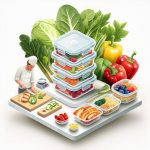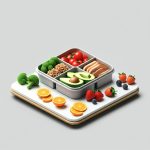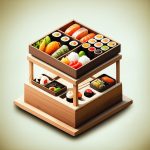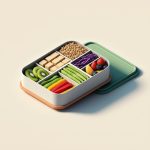Losing 50 pounds in six months feels like a monumental task, but it’s entirely achievable with the right strategy. This goal breaks down to a consistent loss of about two pounds a week—a target that’s both ambitious and widely considered safe by health professionals. Forget the crash diets and unsustainable workout fads; this is about making smart, systematic changes that deliver real results without wrecking your health or happiness.
This guide provides the tactical blueprint. We’ll skip the fluff and focus on the math, the meals, and the movements that will get you there.
At a Glance: Your Roadmap to Success
- The Core Equation: Understand the simple math behind a 1,000-calorie daily deficit and how to create it without starving yourself.
- Strategic Eating: Learn to build powerful, fat-burning meals using the “Plate Method”—no complex calorie counting required at first glance.
- Purposeful Movement: Discover the two-part exercise formula that torches calories and revs up your metabolism for 24/7 fat loss.
- The Lifestyle Levers: Master the “invisible” factors like sleep and stress that can make or break your progress.
- A Week in Action: See a sample meal and workout plan you can adapt and use as a starting point today.
The Non-Negotiable Math of Losing 50 Pounds
Success starts with understanding the numbers. Vague goals lead to vague results. To lose 50 pounds in 26 weeks, you need to target a loss of approximately 1.9 pounds per week.
Since one pound of fat is equivalent to roughly 3,500 calories, losing about two pounds a week requires a weekly deficit of 7,000 calories. That sounds intimidating, but let’s break it down:
7,000 calories/week ÷ 7 days/week = 1,000-calorie deficit per day.
Here’s the key: You don’t have to slash 1,000 calories from your diet alone. That often leads to hunger, cravings, and quitting. Instead, we split the effort.
- -500 Calories from Diet: This is a manageable reduction. It could be as simple as cutting out liquid calories (soda, sweetened coffees), reducing portion sizes, and swapping processed snacks for whole foods.
- -500 Calories from Exercise: This is what an hour of moderate-to-vigorous activity, like jogging, circuit training, or a brisk swim, can achieve for most people.
This balanced 500/500 split is the cornerstone of any sustainable plan. It ensures you’re losing fat, not just water weight or precious muscle, and it’s the most effective framework to Lose 50 pounds healthily, preventing the metabolic slowdown and burnout that plague diet-only approaches.
Architect Your Diet for Fat Loss, Not Frustration
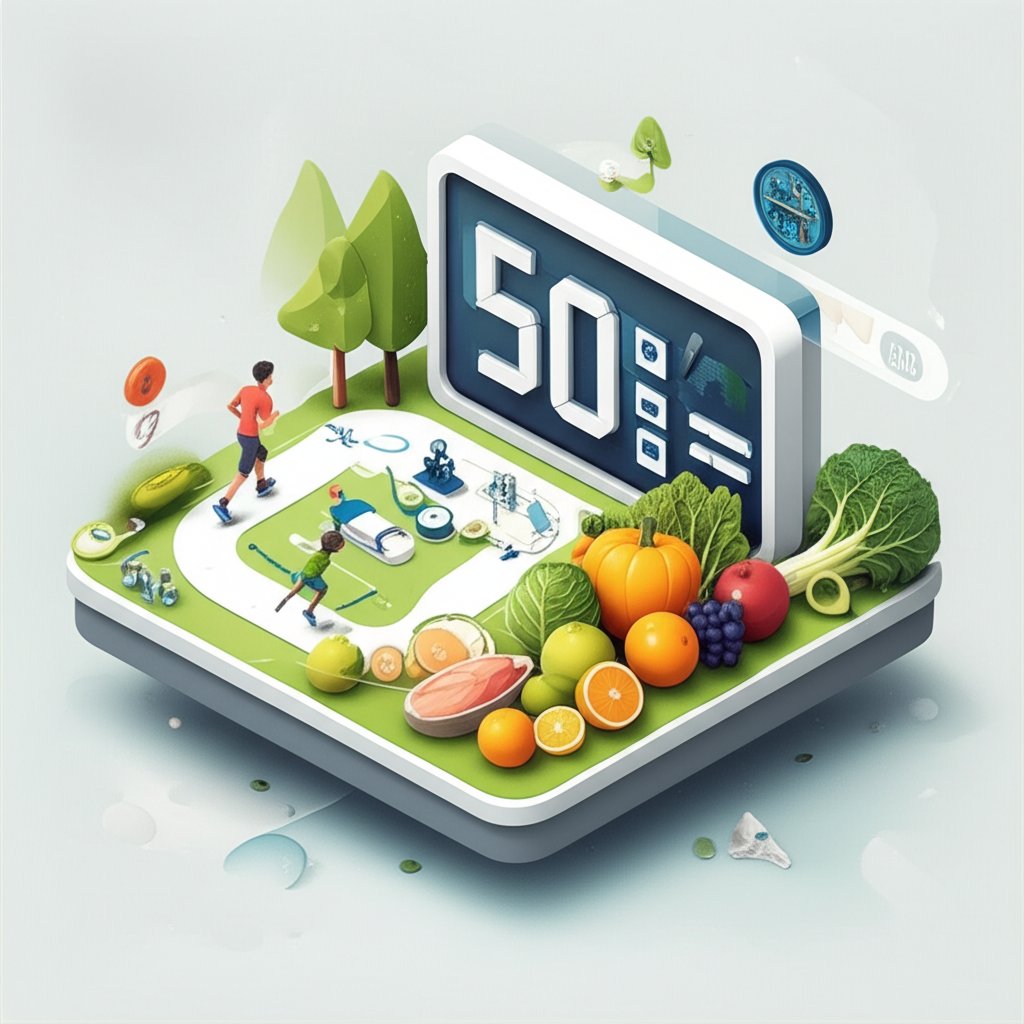
You can’t out-train a bad diet. Food is the primary driver of fat loss. Instead of getting bogged down in counting every last calorie, start with a simple, visual framework: the “Plate Method.”
Imagine your dinner plate. Now, divide it.
Half Your Plate: Non-Starchy Vegetables
This is your volume. Fill half your plate with vegetables like spinach, broccoli, cauliflower, bell peppers, zucchini, and leafy greens.
- Why it works: These foods are incredibly low in calories (a whole cup of spinach is less than 10 calories) but high in fiber and water. They fill you up, provide essential micronutrients, and keep you satisfied without adding significant calories to your meal.
One Quarter of Your Plate: Lean Protein
Dedicate a space the size of your palm to a high-quality protein source. Think grilled chicken breast, baked fish (like cod or salmon), eggs, tofu, or lean ground turkey.
- Why it works: Protein is the MVP of fat loss. It’s highly satiating, meaning it keeps you feeling full longer than carbs or fats. It also has a higher thermic effect of food (TEF), meaning your body burns more calories just digesting it. Finally, protein is essential for preserving and building muscle while you lose weight.
One Quarter of Your Plate: Fiber-Rich Carbohydrates
In the last quarter, add a fist-sized portion of a complex, fiber-rich carbohydrate. This is your energy source. Good choices include sweet potatoes, quinoa, brown rice, beans, and lentils.
- Why it works: Unlike refined carbs (white bread, pasta, sugar), these carbs are digested slowly. They provide sustained energy without spiking your blood sugar, which helps control cravings and prevent energy crashes. Aim for a minimum of 130 grams per day to ensure your brain has the fuel it needs to function optimally.
A Dash of Healthy Fats
Don’t forget to include a thumb-sized portion of healthy fats with your meals. This could be a quarter of an avocado, a sprinkle of nuts or seeds, or cooking with olive oil.
- Why it works: Healthy fats are crucial for hormone production, including those that regulate appetite. They also improve satiety and the absorption of fat-soluble vitamins.
Case Snippet: Mark, a 45-year-old office worker, used to eat a large sandwich on white bread for lunch. He swapped it for a large salad (the half plate of veggies) topped with grilled chicken (the quarter plate of protein) and a small scoop of chickpeas (the quarter plate of carbs), dressed with olive oil. This single change cut over 400 calories from his daily intake and kept him full all afternoon.
The Movement Strategy: Burn Calories and Build Metabolism
Exercise is your deficit accelerator and your metabolism-booster. A smart plan for how to lose 50 pounds in 6 months combines two types of training for maximum effect. Aim for 30-60 minutes of intentional movement on most days of the week.
The Cardio Component: Your Calorie-Burning Workhorse
Cardiovascular exercise is fantastic for burning calories in the moment. The goal is to elevate your heart rate and keep it there.
- Moderate-Intensity: Think brisk walking, jogging, cycling, or using the elliptical. You should be able to hold a conversation, but just barely. Aim for 3-4 sessions of 30-60 minutes per week.
- High-Intensity Interval Training (HIIT): This involves short bursts of all-out effort followed by brief recovery periods (e.g., 30 seconds of sprinting, 60 seconds of walking, repeat). HIIT is incredibly time-efficient for calorie burning and can boost your metabolism for hours after the workout. Aim for 1-2 sessions of 20-25 minutes per week.
The Strength Training Component: Your Metabolic Engine
This is the most overlooked part of fat loss. Lifting weights or doing bodyweight exercises (like push-ups and squats) builds lean muscle.
- Why it works: Muscle is metabolically active tissue. The more muscle you have, the more calories your body burns at rest. While a cardio session burns calories for an hour, the muscle you build from strength training burns extra calories 24/7. This is your long-term strategy for keeping the weight off.
- The Plan: Aim to train each major muscle group (legs, back, chest, shoulders, arms) at least twice per week. You can do this with two full-body workouts or by splitting your routine into upper- and lower-body days.
The “Invisible” Exercise: Maximizing NEAT
NEAT stands for Non-Exercise Activity Thermogenesis. It’s all the calories you burn from movement that isn’t formal exercise—walking to your car, taking the stairs, fidgeting, doing chores. This can account for hundreds of calories per day.
- Actionable Steps:
- Take the stairs instead of the elevator.
- Park farther away from the store entrance.
- Set a timer to stand up and walk around for 5 minutes every hour.
- Pace around while on phone calls.
Putting It All Together: A Sample Week to Get You Started
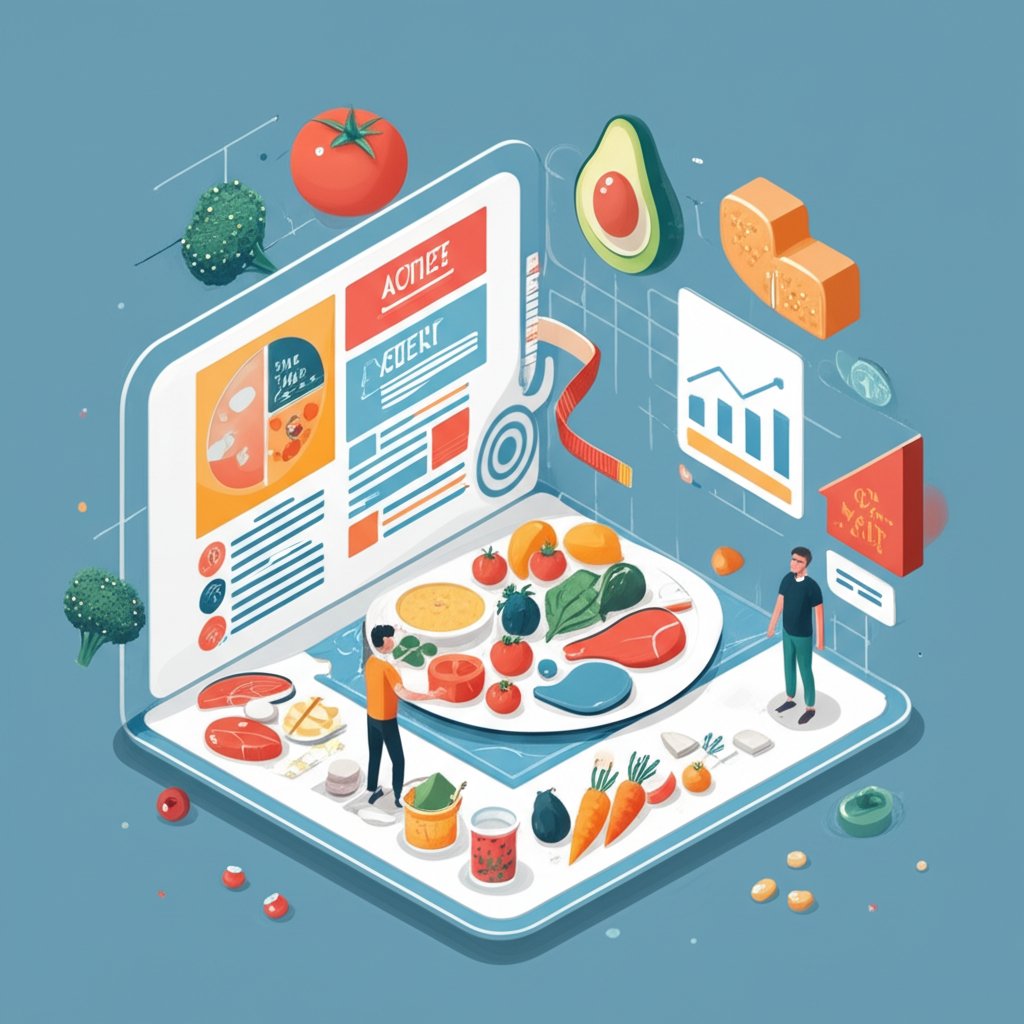
Theory is great, but action is better. Here’s what a successful week might look like.
Sample Workout Schedule
| Day | Activity | Focus |
|---|---|---|
| Monday | Full-Body Strength Circuit (45 mins) | Build metabolism |
| Tuesday | Moderate Cardio (30-45 mins) | Calorie burn (jog, bike) |
| Wednesday | HIIT Session (20 mins) | Max-efficiency calorie burn |
| Thursday | Full-Body Strength Circuit (45 mins) | Build metabolism |
| Friday | Moderate Cardio (45-60 mins) | Endurance & calorie burn |
| Saturday | Active Recovery | Light activity (long walk, yoga) |
| Sunday | Rest | Full recovery |
A Day of Eating (Approx. 1,400 Calories)
- Breakfast (350 cal): 3-egg omelet with spinach and mushrooms, plus half an avocado.
- Lunch (400 cal): Large mixed greens salad with 4 oz grilled chicken, bell peppers, cucumbers, and a light vinaigrette.
- Snack (200 cal): 1 cup of Greek yogurt with a handful of berries.
- Dinner (450 cal): 5 oz baked salmon, a cup of roasted broccoli, and 1/2 cup of quinoa.
Bonus Tip: Drink two large glasses of water about 20-30 minutes before each meal. Studies have shown this simple habit can increase feelings of fullness and boost weight loss.
Common Questions on Losing 50 Pounds in 6 Months
Q: Can I lose 50 pounds in 6 months without exercise?
A: It is technically possible but highly inadvisable. To achieve a 1,000-calorie daily deficit through diet alone, you’d have to eat very little food. This increases the risk of nutrient deficiencies, severe muscle loss (which tanks your metabolism), and extreme fatigue and hunger, making the plan nearly impossible to stick to. Exercise is a critical partner in this process.
Q: What should I do if I hit a weight loss plateau?
A: Plateaus are a normal part of the journey. First, ensure you’re still tracking accurately. As you lose weight, your body needs fewer calories, so you may need to slightly adjust your intake. Second, intensify your workouts. Try adding another HIIT session, increasing your weights, or extending your cardio time. Finally, check your lifestyle factors—are you getting 7-9 hours of sleep and managing stress?
Q: Is it okay to have a “cheat meal”?
A: A single, planned indulgent meal can be a useful psychological tool to improve long-term adherence. However, a “cheat day” can easily undo an entire week of progress. If you choose to have one, plan it, enjoy it mindfully, and get right back on track with your next meal. Don’t let one off-plan meal become an off-plan weekend.
Q: Do I really have to give up alcohol?
A: Alcohol presents a triple threat to weight loss. It contains empty calories (a craft beer can have 200+), it lowers your inhibitions (making you more likely to overeat), and it can temporarily halt your body’s fat-burning processes. While an occasional drink might fit, frequent consumption will significantly slow your progress toward losing 50 pounds.
Your First Step Is Today, Not “Tomorrow”
Reading this guide is the easy part. The journey to losing 50 pounds in 6 months is built on a series of small, consistent actions, not one giant leap of motivation. Perfection isn’t the goal; relentless consistency is.
So pick one thing from this guide to implement right now.
Don’t wait. Swap your afternoon soda for a large glass of ice water. Go for a 15-minute walk on your lunch break. Plan your meals for the next three days. Clear the chips and cookies out of your pantry.
Small, decisive actions create the momentum you need to see this through. The person you want to be in six months is built by the choices you make today.
- Bento Tray Revolutionizes Organized Meal Transport and Presentation - December 10, 2025
- Meal Plans for Busy Schedules That Make Healthy Eating Easy - December 10, 2025
- Where to Buy Bento Boxes for Healthy, Organized Meals - December 9, 2025


